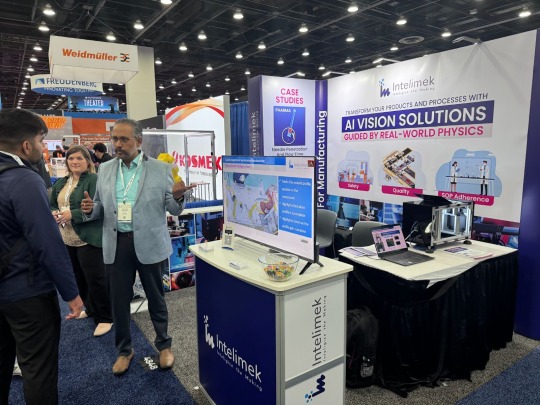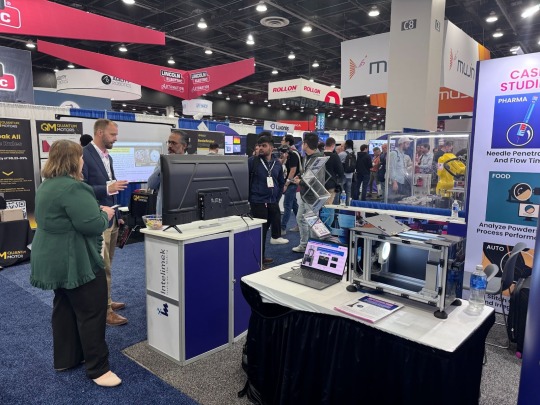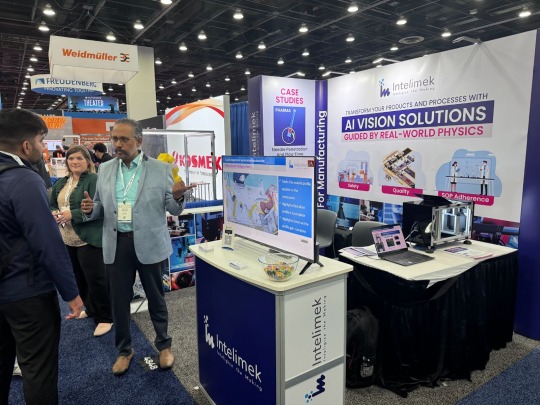Don't wanna be here? Send us removal request.
Text
From Doodles to Deployment: Our Journey into Physics-Guided Machine Vision
A few years ago, we started exploring AI with curiosity, dabbling in low-code/no-code tools, open-source packages, and testing out ideas to solve real problems. As our focus is primarily the manufacturing space, the excitement quickly met reality: reliable data was scarce, and accuracy couldn’t be a maybe. In production, a model either works or it doesn’t—there’s no room for ambiguity.
Coming from a mechanical engineering background, we kept asking: how do we trust a prediction if we can’t explain it? That’s what led us to evolve our thinking from pure data-driven models to Physics-Guided AI. Instead of treating model building as a standard pipeline, we began incorporating domain understanding, physics-based reasoning, and system constraints into our approach. It wasn’t just about models, it became a multi-stage workflow that blended image processing, regression, and contextual rules driven by how things actually work.
When we stepped into machine vision for inspections, we noticed a gap. Pre-trained models and vision platforms were available, but they often stopped short of delivering end-to-end solutions. Customers didn’t want components; they wanted working systems.
That’s where our approach made the difference. We applied the same physics-guided principles to machine vision solving tough inspection challenges and integrating them fully with machine control systems. At Automate 2025, this approach resonated deeply. Our live demo, featuring a smart, vision-enabled upgrade of a syringe testing system (UTM) for auto-injectors, caught attention for its practicality and execution.


This wasn’t just another proof of concept. It was a real transformation turning a traditional test system into a precise, automated inspection unit for healthcare devices.
Check out the full story in our latest blog.
Why Intelimek
At Intelimek, we transform existing equipment and processes into smart, vision-enabled systems by integrating machine vision with physics-guided AI. Instead of isolated tools, we deliver end-to-end solutions that combine domain knowledge, image intelligence, and control logic. Know more about our success stories.
0 notes
Text
From Doodles to Deployment: Our Journey into Physics-Guided Machine Vision
A few years ago, we started exploring AI with curiosity, dabbling in low-code/no-code tools, open-source packages, and testing out ideas to solve real problems. As our focus is primarily the manufacturing space, the excitement quickly met reality: reliable data was scarce, and accuracy couldn’t be a maybe. In production, a model either works or it doesn’t—there’s no room for ambiguity.
Coming from a mechanical engineering background, we kept asking: how do we trust a prediction if we can’t explain it? That’s what led us to evolve our thinking from pure data-driven models to Physics-Guided AI. Instead of treating model building as a standard pipeline, we began incorporating domain understanding, physics-based reasoning, and system constraints into our approach. It wasn’t just about models, it became a multi-stage workflow that blended image processing, regression, and contextual rules driven by how things actually work.
When we stepped into machine vision for inspections, we noticed a gap. Pre-trained models and vision platforms were available, but they often stopped short of delivering end-to-end solutions. Customers didn’t want components; they wanted working systems.
That’s where our approach made the difference. We applied the same physics-guided principles to machine vision solving tough inspection challenges and integrating them fully with machine control systems. At Automate 2025, this approach resonated deeply. Our live demo, featuring a smart, vision-enabled upgrade of a syringe testing system (UTM) for auto-injectors, caught attention for its practicality and execution.


This wasn’t just another proof of concept. It was a real transformation turning a traditional test system into a precise, automated inspection unit for healthcare devices.
Check out the full story in our latest blog.
Why Intelimek
At Intelimek, we transform existing equipment and processes into smart, vision-enabled systems by integrating machine vision with physics-guided AI. Instead of isolated tools, we deliver end-to-end solutions that combine domain knowledge, image intelligence, and control logic. Know more about our success stories.
1 note
·
View note